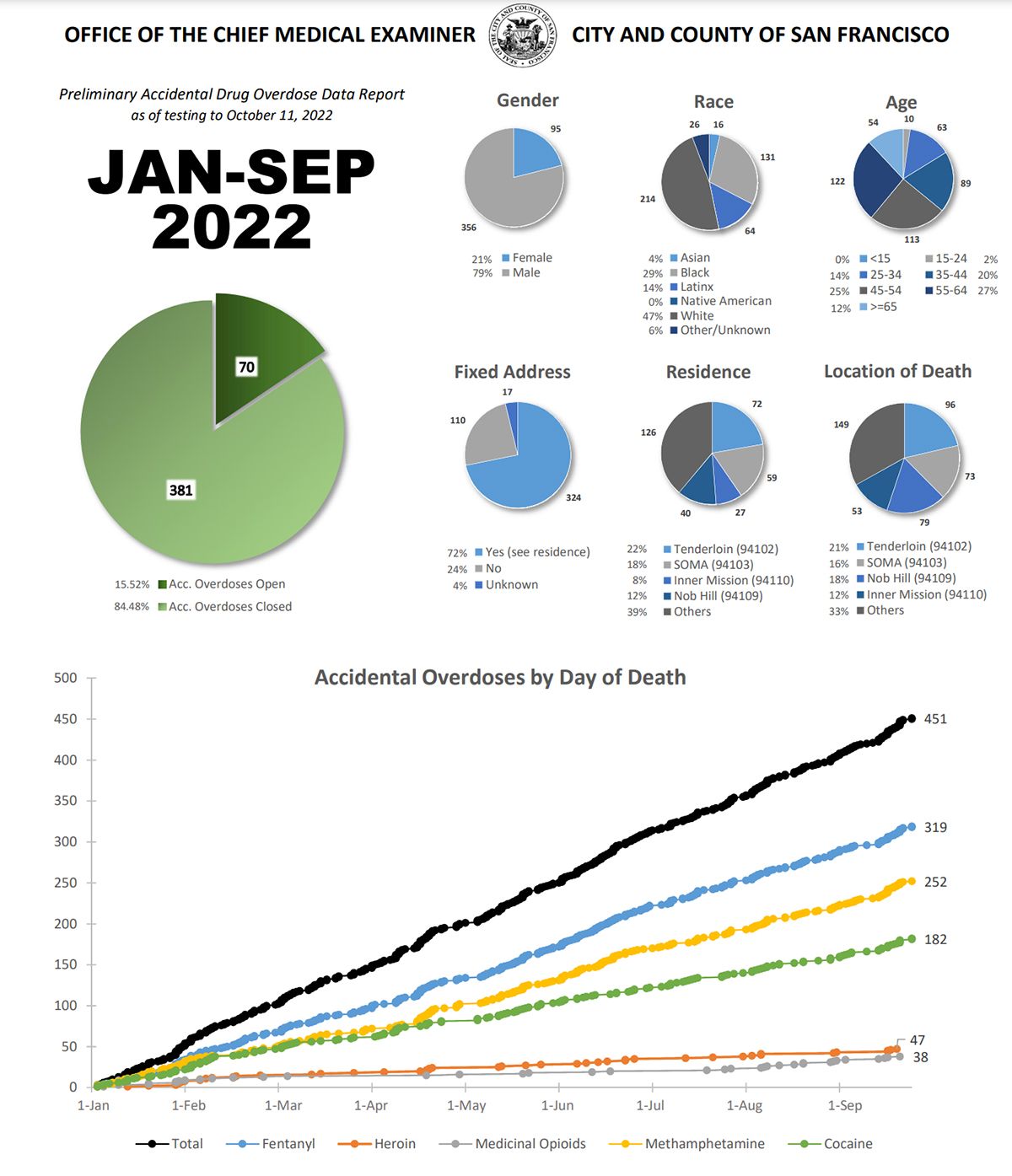Accidental overdose deaths in San Francisco, largely driven by the proliferation of fentanyl, continue to decline slightly in number from a peak in 2020. However they still remain at crisis levels, according to a new report from the city's Office of the Chief Medical Examiner (OCME).
The latest report, which covers the months of January to September 2022, reveals that 451 deaths by accidental OD have occurred this year to date. Of those 319 involved fentanyl, some in combination with methamphetamine and cocaine. Deaths from heroin remain low, with only 47 (around 10%) of the deceased having heroin in their systems.
Health experts have warned for several years that traces of fentanyl, sometimes in potentially fatal amounts, have been found in cocaine, likely as a result of cross-contamination during processing by dealers. Stories of accidental deaths among recreational cocaine users have surfaced only occasionally — like this tragic story of three friends who died while partying in a Mission District apartment in March.
Contrary to the narratives we tend to hear, the vast majority of the individuals who died of accidental overdoses were not homeless — 72% had fixed addresses at the time of their deaths. And only 22% had addresses in the Tenderloin, with the remainder residing elsewhere in or outside the city. (18% had addresses in SoMa, which could mean a Sixth Street SRO.) In total, 21% of these deaths occurred in the Tenderloin, 16% occurred in SoMa, 18% occurred in Nob Hill, and 12% occurred in the Inner Mission, with a third occurring elsewhere.
79% of the victims of fatal overdoses were men, while 21% were women.

June saw the highest number of ODs, with 59, but September was close behind, with 55.
If the numbers hold steady, the city is on track to see another 150 people die of accidental overdoses before the end of the year, bringing the total to around 600, a 4% drop year over year. Last year's total was 625, marking an 11% decrease from 2020's high water mark of 711.
The city published its latest Overdose Prevention Plan earlier this month, laying out a goal of reducing fatal overdoses by 15% by 2025, and also reducing racial disparities in fatal overdoses among Black residents by 30% in that same time — with health officials noting that Black residents are five times more likely to die of an accidental overdose than others in the city.
Also part of the plan is increasing naloxone distribution from 47,000 kits to 75,000 kits annually in the next two years, and to 100,000 kits in next three to four years. The prevalence of naloxone has been credited, in part, with starting to decrease the number of accidental ODs.
"The City mourns the loss of these members of our community and remains committed to aggressively approaching drug overdoses as a public health crisis," the report says. "Addiction is not a moral failing. Lives can be saved by increasing access to treatment and implementing evidence-based harm reduction interventions."
Photo: Jonathan Gonzalez

